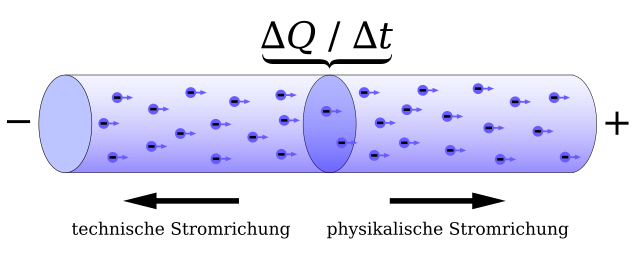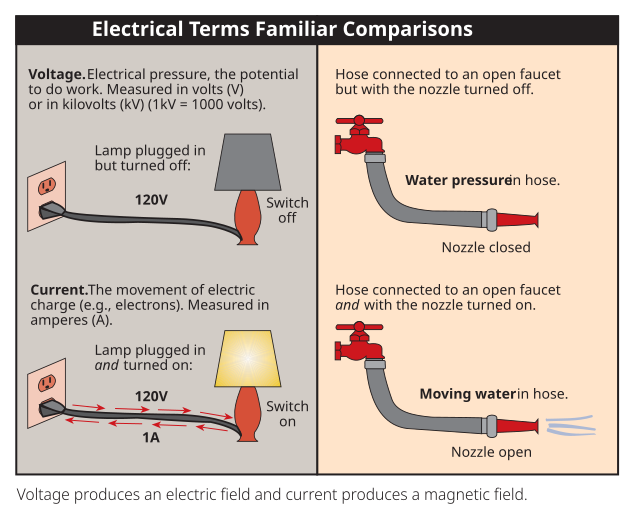Electric current is one of the most essential concepts in electrical and electronic systems. Whether you’re building a basic circuit with an LED or troubleshooting a complex device, understanding current is key. In this guide, we’ll explain what electric current is, how it works, how it’s measured, and the different types you’ll encounter in practical circuits.
What Is Electric Current?
Electric current is the flow of electric charge through a conductor. In most cases, this means the movement of electrons through a wire. Current flows when there is a potential difference (voltage) across two points and a complete path for the charges to travel.

You can think of it like water flowing through a pipe:
- Voltage is the pressure pushing the water.
- Current is the actual flow of water.
The higher the voltage and the lower the resistance, the greater the current.
How Does Current Work in a Circuit?
In a basic circuit, when you connect a power source (like a battery) to a load (like a lamp or resistor) with a complete conducting path, electrons start moving from the negative terminal to the positive terminal. This movement of electrons is the electric current.
Interestingly, in traditional circuit theory, conventional current is considered to flow from positive to negative, even though electrons actually flow in the opposite direction. This is just a historical convention and doesn’t affect how we calculate or design circuits.
Current will only flow when the circuit is closed. If the path is broken (for example, by an open switch or a disconnected wire), current stops—even if voltage is still present.
Measuring Current
Electric current is measured in amperes (A), often just called “amps.” It tells us how many charges are moving past a point in the circuit per second. One ampere equals the flow of one coulomb of charge per second—which is about 6.242 × 10^18 electrons.
To measure current, we use an ammeter, or a multimeter set to current mode. But unlike measuring voltage, where we connect the meter in parallel, to measure current correctly, we need to place the meter in series with the component—so the current flows through the meter.
In small electronic circuits, current is usually measured in milliamps (mA). In higher power applications like motors or appliances, we measure it in full amperes (A). Understanding these values helps ensure that we don’t overload any part of the circuit.
Types of Electric Current
There are two main types of current you’ll encounter:
Direct Current (DC) flows in a single, constant direction. This is the type of current provided by batteries, solar panels, and USB ports. It’s steady, predictable, and ideal for electronics.
Alternating Current (AC) changes direction periodically. It’s the type of current that comes from wall sockets. Instead of flowing one way, the current reverses back and forth many times per second. That’s what allows it to be transmitted efficiently over long distances.
Even though both types of current are fundamentally about moving charge, they behave differently in circuits—and understanding how they work is important when choosing power supplies, designing filters, or working with motors.
Current, Voltage, and Resistance
Electric current doesn’t exist on its own—it’s always linked to voltage and resistance. Their relationship is described by Ohm’s Law:
I = V / RThis means current (I) increases when voltage (V) increases, and it decreases when resistance (R) increases.
This simple equation helps you calculate how much current will flow through a component, given its resistance and the voltage applied across it. It’s especially useful when sizing resistors to limit current to safe levels in things like LEDs or logic chips.
Why Managing Current Matters
Understanding current isn’t just about theory—it’s critical for building circuits that are safe and functional.
If too much current flows through a component, it can overheat, get damaged, or even catch fire. That’s why we use resistors—not just to drop voltage, but to limit the amount of current flowing through sensitive parts of a circuit.
In larger systems, devices like fuses, circuit breakers, or current-limiting ICs act like safety valves. They shut things down or interrupt the flow when current exceeds safe limits.
Every wire, resistor, or component is rated for a maximum amount of current. If that limit is exceeded, the results can be damaging. So part of designing any circuit is knowing how much current will flow, and making sure everything in the path can handle it.
The Hidden Side of Current
There’s something fascinating about current that isn’t always obvious: it creates a magnetic field. Anytime current flows through a wire, it generates a field around it. This is the basic principle behind electromagnets, motors, inductors, and transformers.
Without current, we wouldn’t have electric fans, speakers, MRI machines, or hard drives. Current not only powers things—it moves them, senses them, and makes them interact with the world around us.
So while voltage is what makes electricity possible, current is what makes electricity useful.
In Summary
Electric current is the movement of charge through a circuit. It flows when there is voltage, a closed path, and something for the current to do—like lighting a bulb or turning a motor.
By learning how current works, how to measure it, and how to control it, you’ll be able to design safer, more reliable circuits that actually do what you want them to do.
Whether you’re experimenting on a breadboard or troubleshooting a real-world device, current is always at the heart of the action.

